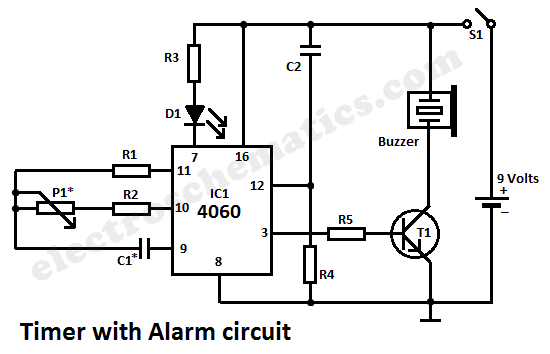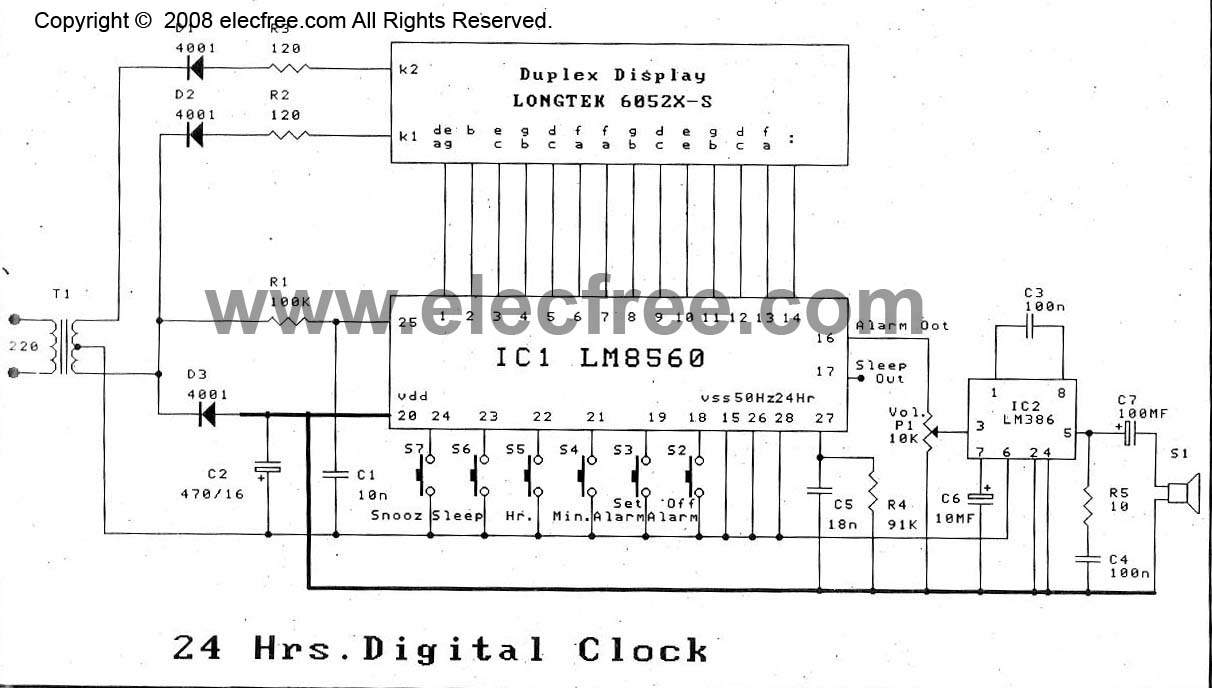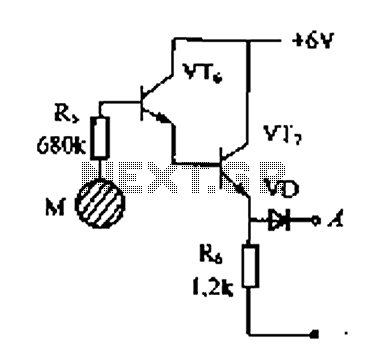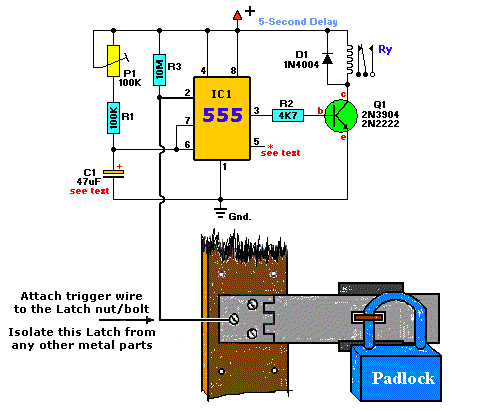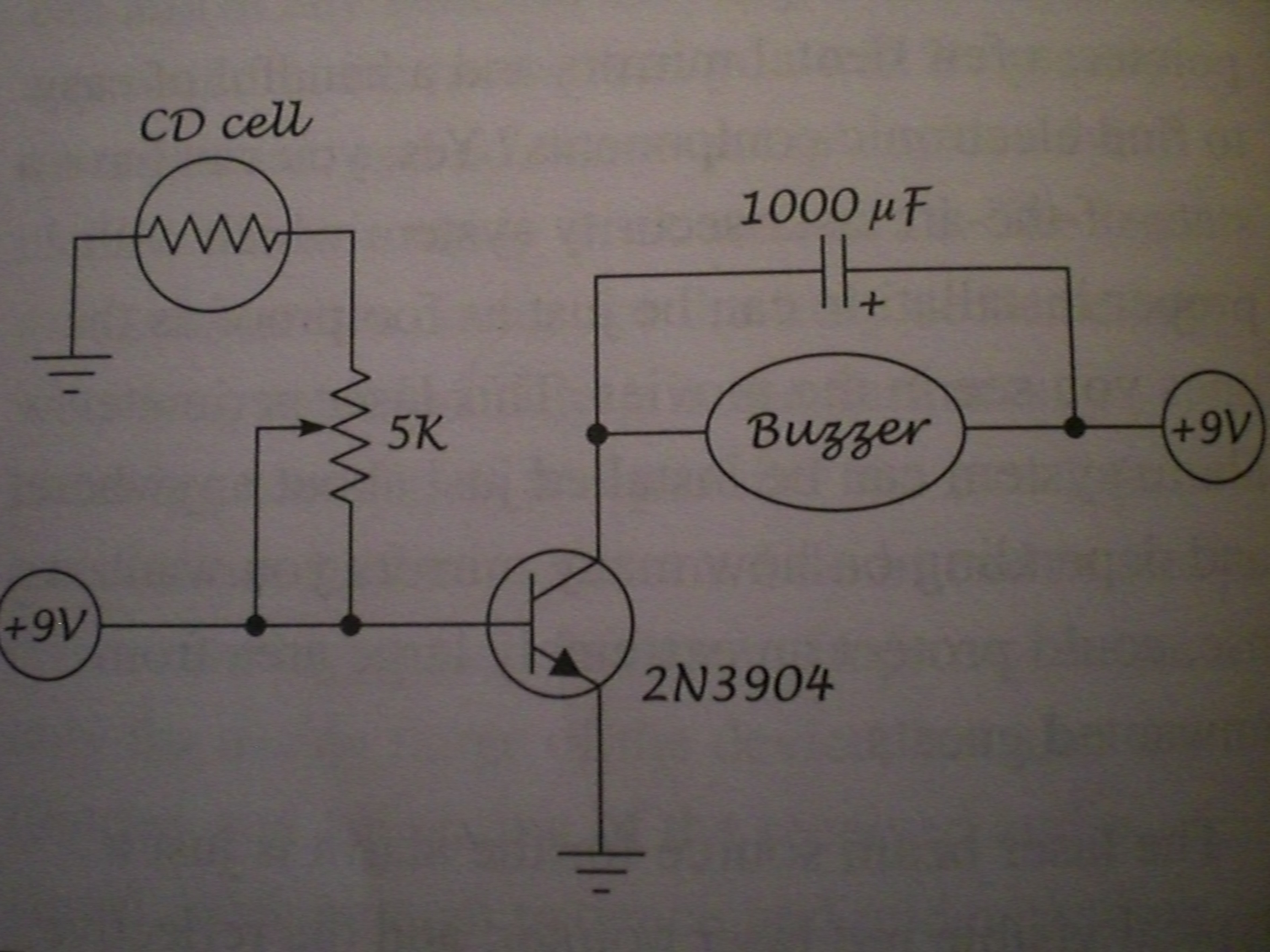
Burglar alarm bell
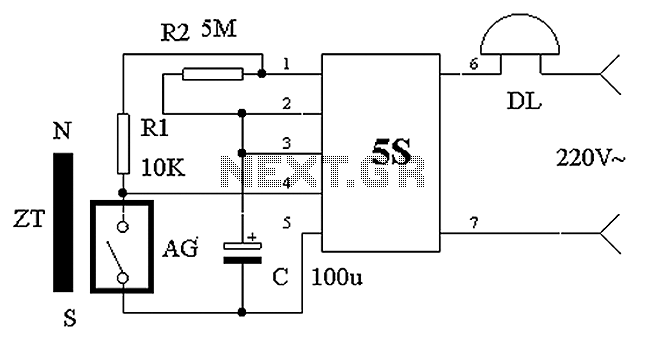
The circuit operates based on the principle of a shaped permanent magnet mounted on the door, referred to as ZT, and a normally closed reed switch, labeled AG, mounted on the door frame. Under normal conditions, ZT is in close proximity to AG, keeping the two contact pieces of AG open. In this state, the voltage at pin 5S is high, which turns off the internal circuitry of the module, preventing the bell (DL) from sounding. When the owner sleeps at night, if an intruder enters the room, ZT will move away from AG, causing the two contacts of AG to reset. This action brings pin 5S low, activating the internal circuit and powering DL, which emits a loud alarm sound. The alarm will not cease immediately after the door is closed again due to a delay mechanism involving resistor R2 and capacitor C, allowing the circuit to remain operational for a predetermined time before shutting down automatically.
The described circuit utilizes a shaped permanent magnet (ZT) and a normally closed reed switch (AG) to create a security system that activates an alarm (DL) when unauthorized access is detected. The permanent magnet is strategically placed on the door, while the reed switch is fixed to the door frame, allowing for a reliable detection mechanism that is triggered by the movement of the door.
In the default state, the proximity of the magnet to the reed switch keeps the switch contacts open, which results in a high voltage signal on pin 5S. This high signal ensures that the internal circuitry of the alarm module remains inactive, thereby preventing any false alarms during normal use. The system is designed to operate in a low-power state, conserving energy when not in use.
Upon the intrusion, as the door opens and the magnet moves away from the reed switch, the contacts of AG close, causing the voltage at pin 5S to drop to a low state. This transition activates the internal circuitry of the module, which in turn powers the alarm (DL). The alarm emits a loud sound to alert the owner of the breach, effectively deterring potential intruders.
The delay feature incorporated into the circuit is vital for preventing nuisance alarms. The combination of resistor R2 and capacitor C creates a time delay that allows the system to remain in an active state for a brief period, even after the door is closed. This ensures that if the door is closed quickly after an intrusion, the alarm will still sound for a specified duration before the system resets itself.
Overall, the design of this circuit is both practical and efficient, utilizing simple components to create an effective security solution. The integration of the permanent magnet and reed switch allows for a reliable operation, while the delay mechanism enhances the user experience by minimizing false alarms. Circuit operation principle of the device shown in Fig. Shaped permanent magnet mounted on the door ZT activity, normally closed reed AG mounted on the door frame. Usually ZT c lose to AG, so that the two contact pieces open within AG, at this time of 5S foot was high, the modules internal circuitry is turned off, bells DL does not work. Sleep night after the owner, if a person comes into the room, and will inevitably lead to ZT AG away, within two contacts reset AG collapsed, so 5S module pin goes low, the internal circuit opened, DL power of work, issued a loud alarm sound.
Not the door is closed again, the alarm will not stop immediately, since delay action R2, C, the circuit will still work for some time stops automatically.
The described circuit utilizes a shaped permanent magnet (ZT) and a normally closed reed switch (AG) to create a security system that activates an alarm (DL) when unauthorized access is detected. The permanent magnet is strategically placed on the door, while the reed switch is fixed to the door frame, allowing for a reliable detection mechanism that is triggered by the movement of the door.
In the default state, the proximity of the magnet to the reed switch keeps the switch contacts open, which results in a high voltage signal on pin 5S. This high signal ensures that the internal circuitry of the alarm module remains inactive, thereby preventing any false alarms during normal use. The system is designed to operate in a low-power state, conserving energy when not in use.
Upon the intrusion, as the door opens and the magnet moves away from the reed switch, the contacts of AG close, causing the voltage at pin 5S to drop to a low state. This transition activates the internal circuitry of the module, which in turn powers the alarm (DL). The alarm emits a loud sound to alert the owner of the breach, effectively deterring potential intruders.
The delay feature incorporated into the circuit is vital for preventing nuisance alarms. The combination of resistor R2 and capacitor C creates a time delay that allows the system to remain in an active state for a brief period, even after the door is closed. This ensures that if the door is closed quickly after an intrusion, the alarm will still sound for a specified duration before the system resets itself.
Overall, the design of this circuit is both practical and efficient, utilizing simple components to create an effective security solution. The integration of the permanent magnet and reed switch allows for a reliable operation, while the delay mechanism enhances the user experience by minimizing false alarms. Circuit operation principle of the device shown in Fig. Shaped permanent magnet mounted on the door ZT activity, normally closed reed AG mounted on the door frame. Usually ZT c lose to AG, so that the two contact pieces open within AG, at this time of 5S foot was high, the modules internal circuitry is turned off, bells DL does not work. Sleep night after the owner, if a person comes into the room, and will inevitably lead to ZT AG away, within two contacts reset AG collapsed, so 5S module pin goes low, the internal circuit opened, DL power of work, issued a loud alarm sound.
Not the door is closed again, the alarm will not stop immediately, since delay action R2, C, the circuit will still work for some time stops automatically.

